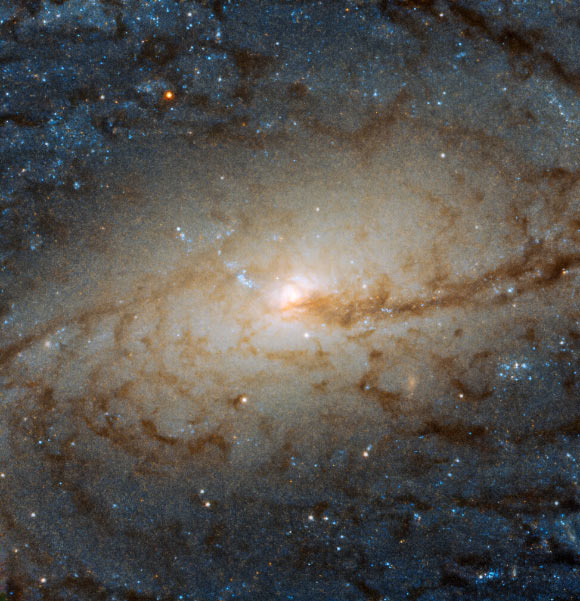Hubble Space Telescope Zooms In on NGC 3887 | Astronomy – Sci-News.com
The NASA/ESA Hubble Space Telescope has captured an amazing photo of the central region of a barred spiral galaxy called NGC 3887.

This Hubble image shows the central part of the barred spiral galaxy NGC 3887. The image is made up of observations from Hubble’s Wide Field Camera 3 (WFC3) in the infrared and optical parts of the spectrum. It is based on data obtained through three filters. The color results from assigning different hues to each monochromatic image associated with an individual filter. Image credit: NASA / ESA / Hubble / P. Erwin et al.
NGC 3887 is located approximately 59 million light-years away in the southern constellation of Crater.
Also known as LEDA 36754 and UGCA 246, this galaxy was discovered on December 31 1785, by the German-born British astronomer William Herschel.
NGC 3887’s orientation to us, while not exactly face-on, allows us to see its spiral arms and central bulge in detail, making it an ideal target for studying a spiral galaxy’s winding arms and the stars within them.
The existence of spiral arms was for a long time a problem for astronomers.
“The arms emanate from a spinning core and should therefore become wound up ever more tightly, causing them to eventually disappear after a (cosmologically) short amount of time,” the Hubble astronomer said.
“It was only in the 1960s that scientists came up with the solution to this winding problem.”
“Rather than behaving like rigid structures, spiral arms are in fact areas of greater density in a galaxy’s disk, with dynamics similar to those of a traffic jam,” they explained.
“The density of cars moving through a traffic jam increases at the center of the jam, where they move more slowly.”
“Spiral arms function in a similar way; as gas and dust move through the density waves they become compressed and linger, before moving out of them again.”






